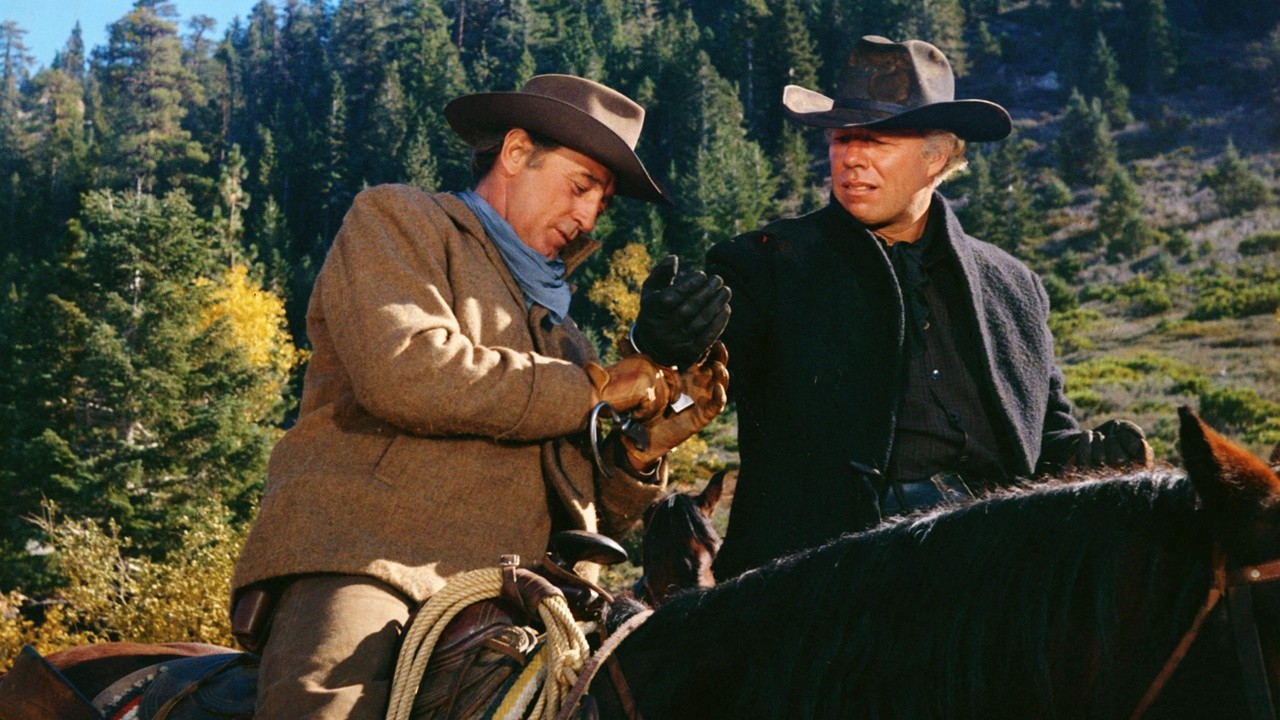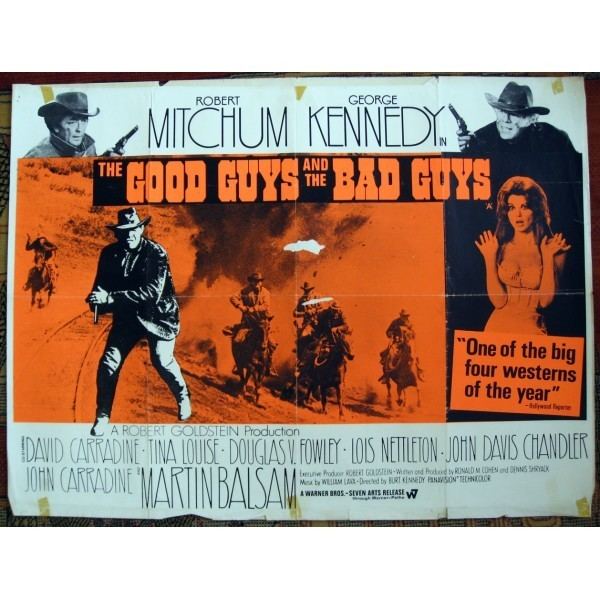Released in 1966, "The Good, the Bad and the Ugly" is a cinematic masterpiece that has left an indelible mark on the world of film. Directed by Sergio Leone, this iconic spaghetti western is a tale of greed, betrayal, and survival set against the backdrop of the American Civil War. Despite being released in 1966, its legacy continues to resonate with audiences worldwide.
This film is not just a story; it is an exploration of human nature, morality, and the complexities of good and evil. The characters, portrayed by Clint Eastwood, Lee Van Cleef, and Eli Wallach, have become archetypes in cinema history. Their performances breathe life into the narrative, making it a timeless classic.
Through this article, we will delve into the depths of "The Good, the Bad and the Ugly," exploring its historical significance, characters, themes, and the impact it has had on the film industry. Whether you're a fan of the movie or simply curious about its legacy, this article aims to provide a comprehensive overview.
Read also:Exploring The World Of 5movierulz Kannada Movie 2024 Your Ultimate Guide
Table of Contents
- Background of the Film
- Characters and Their Significance
- Key Themes Explored
- The Role of Music
- Cinematography and Visual Style
- Historical Context
- The Film's Legacy
- Criticisms and Controversies
- Influence on Modern Cinema
- Conclusion
Background of the Film
Released in 1966, "The Good, the Bad and the Ugly" is the third installment in Sergio Leone's "Dollars Trilogy." It was produced during a time when spaghetti westerns were gaining popularity, and Leone's unique style set this film apart from its contemporaries. The film was initially met with mixed reviews but eventually gained critical acclaim for its storytelling, direction, and music.
Origins of the Project
The idea for the film originated from Leone's fascination with the western genre and his desire to explore the moral ambiguity of its characters. Collaborating with screenwriters Luciano Vincenzoni, Agenore Incrocci, and Franco Arcalli, Leone crafted a narrative that delved into the complexities of human nature. The film's production faced numerous challenges, including budget constraints and location scouting, but these obstacles only added to its authenticity.
Characters and Their Significance
Central to the film's success are its characters, each representing a different facet of morality. Clint Eastwood plays "The Good," a lone drifter with a strong moral compass. Lee Van Cleef portrays "The Bad," a ruthless bounty hunter driven by greed. Eli Wallach embodies "The Ugly," a cunning and opportunistic bandit.
Key Characters
- Blondie (The Good): Clint Eastwood's character is a symbol of justice and honor. His stoic demeanor and sharp instincts make him a compelling figure.
- Angel Eyes (The Bad): Lee Van Cleef's portrayal of a calculating and merciless antagonist adds depth to the film's narrative.
- Tuco (The Ugly): Eli Wallach's energetic performance brings humor and unpredictability to the story, making Tuco a fan favorite.
Key Themes Explored
The film explores themes of morality, greed, and survival. Set against the backdrop of the American Civil War, it highlights the chaos and destruction caused by conflict. The characters' pursuit of treasure serves as a metaphor for humanity's insatiable desire for wealth and power.
Subthemes
- Moral Ambiguity: The film challenges traditional notions of good and evil, presenting characters who defy simple categorization.
- Survival of the Fittest: The harsh realities of life during wartime are depicted through the characters' struggles to survive.
- Greed and Betrayal: The pursuit of treasure drives the narrative, showcasing how greed can lead to betrayal and destruction.
The Role of Music
Ennio Morricone's score for "The Good, the Bad and the Ugly" is as iconic as the film itself. The haunting melody of the main theme perfectly captures the film's essence, enhancing its emotional impact. Morricone's use of unconventional instruments, such as the human voice and whip sounds, creates a unique auditory experience.
Impact of the Score
The music not only complements the visuals but also serves as a narrative device, guiding the audience through the film's emotional highs and lows. Its influence extends beyond the film, inspiring countless composers and soundtracks.
Read also:Unlock Your Entertainment Potential A Comprehensive Guide To Hd Hub 4ucom
Cinematography and Visual Style
The film's visual style is characterized by its wide shots and close-ups, creating a sense of both grandeur and intimacy. Director of Photography Tonino Delli Colli's work captures the stark beauty of the desert landscapes, enhancing the film's atmosphere.
Techniques Used
- Wide Shots: Used to emphasize the vastness of the environment and the characters' isolation.
- Close-Ups: Employed to convey emotion and tension during key moments.
- Lighting: Strategic use of natural light to create a gritty, realistic aesthetic.
Historical Context
Set during the American Civil War, the film uses historical events as a backdrop to explore themes of conflict and survival. While not historically accurate in all aspects, it captures the chaos and uncertainty of the period. The film's portrayal of war highlights its devastating effects on individuals and society.
Relevance Today
The film's exploration of war and its consequences remains relevant in today's world. It serves as a reminder of the importance of peace and understanding in resolving conflicts.
The Film's Legacy
"The Good, the Bad and the Ugly" has left an indelible mark on cinema history. Its influence can be seen in countless films, from its innovative storytelling to its groundbreaking score. The film's enduring popularity is a testament to its universal appeal and timeless themes.
Awards and Recognition
The film has received numerous accolades over the years, including induction into the National Film Registry by the Library of Congress. Its impact on popular culture continues to grow, with references appearing in various media.
Criticisms and Controversies
Despite its success, the film has faced criticism for its violent content and portrayal of war. Some critics argue that its depiction of violence desensitizes audiences to the harsh realities of conflict. However, others defend the film, citing its artistic merit and historical context.
Modern Perspectives
As societal attitudes towards violence and war evolve, the film's portrayal of these themes continues to spark debate. Its ability to provoke thought and discussion underscores its significance as a cultural artifact.
Influence on Modern Cinema
The film's influence on modern cinema cannot be overstated. Its innovative techniques and storytelling have inspired generations of filmmakers. Directors such as Quentin Tarantino and Martin Scorsese have cited "The Good, the Bad and the Ugly" as a major influence on their work.
Legacy in Popular Culture
References to the film abound in modern media, from television shows to video games. Its iconic imagery and music have become part of the cultural lexicon, ensuring its place in cinematic history.
Conclusion
In conclusion, "The Good, the Bad and the Ugly" is a masterpiece that continues to captivate audiences worldwide. Its exploration of morality, greed, and survival, coupled with its groundbreaking score and visual style, makes it a timeless classic. As we reflect on its legacy, we are reminded of the power of cinema to inspire, challenge, and entertain.
We invite you to share your thoughts and experiences with the film in the comments section below. Engage with fellow fans and explore other articles on our site to deepen your understanding of this cinematic treasure. Together, let's celebrate the art of filmmaking and the enduring legacy of "The Good, the Bad and the Ugly."


